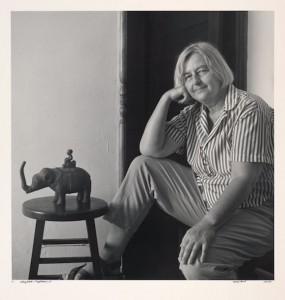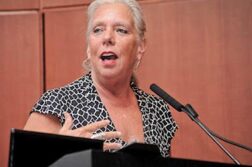SIDNEY ABBOTT, well-known lesbian feminist activist, died in a fire on April 15, 2015, in her home in Southold, Long Island. She was 77. Those of us who knew her remember Sidney as a pioneer in several fields of endeavor, as someone who helped to liberate consciousness from age-old shackles of ignorance and prejudice.
Born on July 11, 1937, in Washington, D.C., Sidney grew up in a military family. Her father, Ward, a West Point graduate, had served as an aide to General Douglas MacArthur in World War II. He was a distant descendant of Philip Livingston, one of the signers of the Declaration of Independence.
Abbott studied at Smith College but ultimately completed her undergraduate studies at the University of New Mexico, with a degree in art history. She went on to study urban planning at Columbia. She subsequently worked as a program developer for New York City and served as the first openly lesbian or gay appointee to a community planning board. In 1969, she joined the National Organization for Women (NOW), becoming a leading spokeswoman for lesbian rights on the organization’s panels. At the time, Betty Friedan, the president of NOW, did not support Sidney’s efforts. Friedan feared that if NOW openly supported lesbian rights, it could compromise the larger agenda of women’s equality, and she dubbed the lesbian presence in NOW as “the lavender menace,” an epithet that would become famous and infamous.
In 1970, Sidney joined with other lesbian feminists to form the group “Lavender Menace.” They protested the exclusion of lesbian issues from the mainstream feminist agenda. She also was a member of the group Radicalesbians. In 1970, they distributed a manifesto titled “The Woman-Identified Woman” at a meeting of the Second Congress to Unite Women in NYC to protest the exclusion of lesbian speakers.
In 1972, Sidney co-authored, with Barbara Love, the groundbreaking book Sappho Was a Right-On Woman: A Liberated View of Lesbianism. Published at a time when the American Psychiatric Association still classified homosexuality as a mental illness, the book was a paragon of tolerance in a hostile society. The authors called for “sweeping readjustments in the way people think.” In the introduction they asserted that their main ambition in writing the book was not to be tolerated as freaks but instead “to be the most ordinary people.” In so doing, she was instrumental in opening the closet and normalizing lesbian life. Later, she was one of the founding board members of the National Gay Task Force as well as the founder of the nonprofit organization Women’s Rights are Human Rights.
On a personal note, I met Sidney in the late ’70s when I was co-director of a women’s counseling center, the Feminist Center for Human Growth and Development in New York. Several of us from the Center met at her apartment in Manhattan to discuss sexism and homophobia in the mental health system. Our talks opened up many areas of exploration for all who attended. Sidney helped us to formulate our thoughts about what was wrong with the prevailing ideas and theories expounded by psychiatry and psychology concerning women, sexuality, and sexual orientation. She helped us to understand how the counseling professions served to force all of us into accepted gender roles and rules.
Sidney Abbott’s papers are at the Sophia Smith Collection, Smith College, and at the Schlesinger Library at Harvard. She is survived by her nephew David Abbott and her sister-in-law Jane Abbott. Her dog Missy and peacock Henrietta survived the fire.
Irene Javors, a psychotherapist based in New York City, is the author of Culture Notes: Essays on Sane Living (2010).





